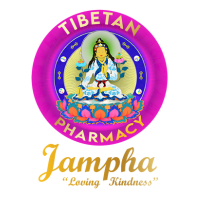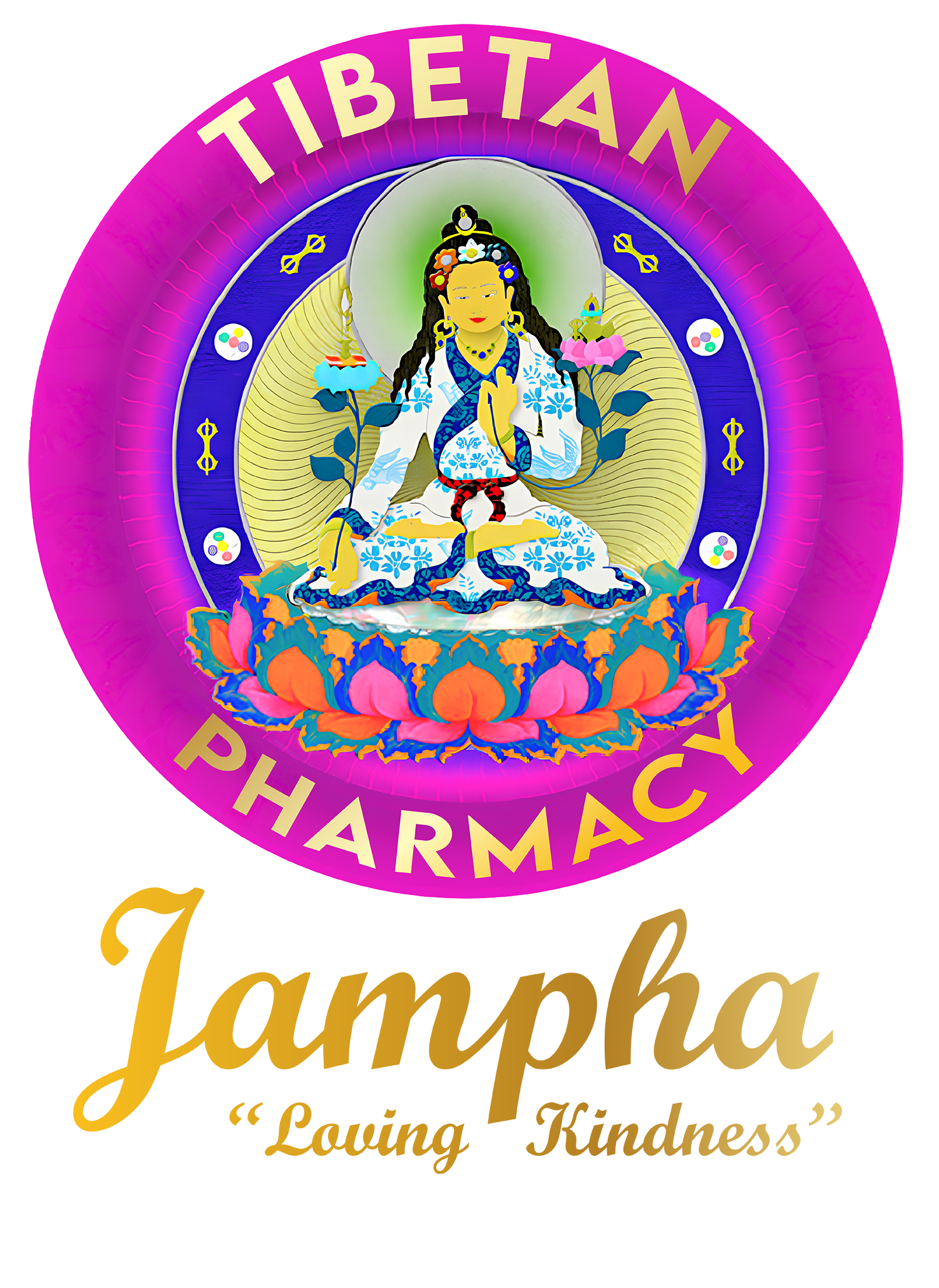Synergy Enhanced Terpene Infusions - Isolated Terpene Properties
Terpenes are chemicals with a huge array of fragrances, flavors, and effects. Their extractions from plants are the most important components of essential oils used in herbal medicine, nutritional supplements, and cosmetics. Jampha has harnessed the power of these plant medicines into power-packed terpene profiles each with unique entourage of effects supporting the repair and healing of dis-eased systems and organs.
ISOLATED TERPENE PROPERTIES:
-
a-Pinene and b-Pinene:
These two cannabis terpenes smell like pine trees, and that’s also where they can be found in large amounts. Other plants rich in Pinene include Rosemary, orange peels, basil, parsley, and of course, cannabis. Like many other terpenes, Pinene terpenes could have an anti-inflammatory effect on humans. More importantly, Pinene terpenes may help improve airflow and respiratory functions, it also may help to reduce memory loss related to THC. Cannabis, if the strain is rich in alpha and beta-pinene, could help with asthma. Pinene also may help patients with Arthritis, Crohn’s Disease, and Cancer.
-
alpha-Bisabolol:
alpha-Bisabolol (also known as Levomenol and Bisabolol) has a pleasant floral aroma and can also be found in chamomile flowers and the Candeia tree. This terpene is primarily used in the cosmetics industry, but it has recently caught the attention of researchers looking for medical benefits, especially from cannabis. alpha-Bisabolol shows effectiveness and could treat bacterial infections and wounds and may be a great antioxidant with anti-irritation and analgesic properties.
-
alpha-Phellandrene:
a-Phellandrene is commonly used in the perfume industry. This terpene's natural aroma, combined with its absorbency, makes this one sought-after terpene! We know that a-Phellandrene could be perfect for:
Comfort, Boosting Energy, Soothing, Spirit Enhancement.
-
Borneol:
Borneol, with its herbal minty scent, can be found in herbs like rosemary, mint, and camphor. This terpene is a good natural insect repellent and could be great in preventing diseases that can be passed by ticks, fleas, and mosquitoes, like the West Nile virus. One study found that Borneol may kills breast cancer cells. Borneol is also widely used in traditional Chinese medicine like acupuncture.
-
Cadinene:
Cadinene has been known and could assist in reducing inflammation, improving energy levels, and uplifting the spirits of users. While we offer Cadinene in our terpene selection, this chemical component is also found in basil essential oils and is often used to add flavouring to food.
-
b-Caryophyllene:
Best known for its spicy and peppery note, caryophyllene is also found in black pepper, cinnamon, cloves, and spices like oregano, basil, and rosemary. Beta-caryophyllene binds to CB2 receptors, which makes it an ingredient in anti-inflammatory tropical and creams. Caryophyllene is the only terpene that binds to cannabinoid receptors. It could have analgesic and anti-anxiety properties, some studies have found that caryophyllene may have some very promising properties for alcoholism rehabilitation.
A group of scientists performed research on mice and found that this terpene may reduces voluntary intake of alcohol. They even recommended caryophyllene for treating alcohol withdrawal symptoms.
-
Camphene:
The best way to describe the smell of Camphene is it smells similar to fir needles, musky earth, and damp woodlands. Camphene aroma is often mistaken with Myrcene, which is the trademark marijuana smell. From a medical point of view, Camphene has great potential. When mixed with Vitamin C, Camphene becomes a powerful antioxidant. It is widely used in conventional medicine as a topical for skin issues like eczema and psoriasis. Camphene's greatest potential lies in its ability to lower levels of cholesterol and triglycerides in the blood, further could also lowering the risk of cardiovascular diseases.
-
Camphor:
Camphor (Cinnamomum Camphora) is a terpene (organic compound) that’s commonly used in creams, ointments, and lotions. Camphor oil is an oil extracted from the wood of Camphor trees and processed by steam distillation. It could be used topically to relieve pain, irritation, and itching. Camphor could also be used to relieve chest congestion and inflammatory conditions.
Scientific research is limited for some of the purported uses for camphor and the evidence is largely anecdotal. Camphor oil may also be used to treat hair loss, acne, warts, earaches, cold sores, hemorrhoids, heart disease symptoms, poor blood circulation, flatulence, anxiety, depression, muscle spasms, and also for low libido.
-
Citral:
Findings suggest that Citral may increases energy dissipation and also could reduce lipid accumulation, consequently preventing and ameliorating diet-induced obesity. In addition, citral has been found to improve insulin sensitivity and glucose tolerance. Citral's potential for healing is significant.
-
delta-3 Carene:
This terpene is found in a number of plants like rosemary, basil, bell peppers, cedar, and pine. Delta 3 Carene's aroma is sweet and resembles the smell of a cypress tree. The terpene could be mostly beneficial in promoting the healing of broken bones. This gives hope to patients suffering from osteoporosis, arthritis, and even fibromyalgia. What is also interesting about this terpene is that it may stimulates our memory and could help memory retention. Delta 3 Carene may be helpful in finding a cure for Alzheimer’s disease.
-
Eucalyptol:
Also known as Cineole, Eucalyptol is the primary terpene of the Eucalyptus tree. Eucalyptol has recognizable minty and cool tones in its smell, but most cannabis strains do not contain large amounts of the terpene. Eucalyptol usually makes up around 0.06% of a strain’s complete terpene profile. This terpene has been used in cosmetics, as well as medicine. Eucalyptol may relieve pain but could also slow the growth of bacteria and fungus. Although still in the early stages of research, this terpene has shown some promising effects on Alzheimer’s and could cure it as well.
-
Eugenol:
The therapeutic properties of clove oil are legendary. This terpene could be used as a stimulant and may have expectorant, carminative, digestive, stomachic, sedative, and may has antispasmodic properties. Eugenol may stimulate digestion, could help with flatulence, restores appetite, and may be a highly effective aid in convalescence from illness or surgery.
-
Fenchol:
Like Borneol, Fenchol is an antimicrobial and antifungal agent, and may have the ability to act as an anti-inflammatory. Neither Fenchol nor Borneol are known to act as sedatives or stimulants.
-
Geraniol:
Besides cannabis, geraniol can be found in lemons and tobacco. The terpene's smell may remind us of roses, grass, peaches, or plums. Geraniol is usually used in aromatic bath products and body lotions. Geraniol has shown noteworthy potential as a neuroprotectant and antioxidant.
-
g-Terpinene:
One of the most versatile terpenes available. g-Terpinene offers a wide range of benefits and could be beneficial for: Acaricide, Angiotensin converting enzyme inhibitor, Aldose reductase inhibitor, Anti acetylcholinesterase, Anti feed-ant , Anti nitrosamines, Anti-oxidant, Anti spasmodic, Flavor, Insecticide, Insectifuge, Irritant, Cytochrome-P450-2B1 inhibitor, Perfumery, Pesticide, and Spasmogenic.
-
Humulene:
Humulene was the first terpene found in hops. The terpene's aroma contains earthy, woody, and spicy notes. Besides cannabis, Humulene can be found in Clove, Sage, and black pepper. Terpene has a variety of medical properties. Early research has shown that Humulene could be an anti-proliferative, meaning it prevents cancer cells from growing. Humulene has also proven effective in suppressing appetite and could be a potential weight loss tool.
-
d-Limonene:
d-Limonene is the second most abundant terpene in all cannabis strains, but not all strains necessarily have it. Limonene gives strains a citrusy smell that resembles lemons, which is no surprise as all citrus fruits contain large amounts of this compound. Limonene is used in cosmetics and also in cleaning products. For therapeutic purposes, limonene is known to improve mood and reduce stress. Researchers have also found anti-fungal and antibacterial properties, and one researcher even found this terpene to have a role in reducing tumor sizes.
-
Linalool:v
This terpene is most responsible for the recognizable marijuana smell with its spicy and floral notes. Linalool is also found in lavender, mint, cinnamon, and coriander. What’s interesting is that just like those aromatic herbs, this terpene has very strong sedative and relaxation properties. Patients suffering from arthritis, depression, seizures, insomnia, and even cancer, have all found aid in this amazing terpene. Linalool also may reduce inflammation, may relieve pain, and could fight bacterial infections.
-
Trans-nerolidol:
Trans-nerolidol is a terpene found in many strong aromatics like jasmine, tea tree, and lemongrass. As such, the terpene delivers a subdued and nuanced floral aroma with notes of fruity citrus, apples, and rose. This terpene is believed to produce sedating effects, it is also being investigated as an anti-parasitic, antifungal, anti-microbial agent and as a growth inhibitor of leishmaniasis.
-
Myrcene:
Myrcene is the most abundant terpene in cannabis and is abundant in nature as well. In fact, one study showed that myrcene makes up as much as 65% of total terpene profiles in some strains. Myrcene smell often reminds one of earthy, musky notes, resembling cloves. Also, the terpene has a fruity, red, grape-like aroma. Strains that contain 0.5% of this terpene are usually indicas with the associated sedative effects. It has also been reported that myrcene is useful and could reduce inflammation and chronic pain, which is why it’s usually recommended as a supplement during cancer treatments.
-
Ocimene:
Although further research is needed, Ocimene has shown promises and could have antiviral, anti-fungal, anti-inflammatory, antibacterial, anti-oxidative, and antiseptic effects. Monoterpenes, such as Ocimene, are used in aromatherapy as a decongestant because they act as a mucous membrane tonic.
-
Para Cymene:
Para Cymene is a monoterpene found in over 100 plant species used for medicine and food purposes. The terpene shows a wide range of biological activity and could have antioxidant, anti-inflammatory, antinociceptive, anxiolytic, anticancer, and antimicrobial effects.
This is explored in detail in the book Essential Oils: A Handbook for Aromatherapy Practice (2nd Edition) written by the aromatherapy expert, Jennifer Peace Rhind. It could be difficult to determine exactly what is impacting on the nervous system with essential oils, given the complexity and variety of terpenes found in any one oil. However, p-Cymene combined with other terpenes found in sweet marjoram oil, clearly has beneficial effects for numbing and soothing pain.
-
Phytol:
The discovery of Phytol as an important part of a regular diet has led to many research studies regarding its use. Phytol is associated with Vitamins E and K. Vitamin E could be useful for cell health and also help decrease cell aging. The terpene could be useful for healthy skin and hair and a stronger immune system. Vitamin K, on the other hand, is involved in blood clotting and may be useful in improving bone health, as well as the treatment of many gastrointestinal illnesses.
Phytol could also be beneficial in regulating blood glucose and possibly restoring the metabolic functions of a type-2 diabetic. There have also been studies regarding the effectiveness of Phytol in reducing cholesterol levels in the blood, ultimately reducing blood pressure levels as well.
-
Pulegone:
Pulegone is a monocyclic monoterpenoid that forms a minor part of the cannabis compound. You could find high concentrations of Pulegone in rosemary. Rosemary has properties that enable it to break down acetylcholine in the brain, thereby facilitating communication between nerve cells. This terpene may help in reducing stress.
-
Sabinene:
Sabinene exhibits many properties and may have very effective anti-inflammatory, anti-microbial, and antifungal properties. According to a study titled Anti-fungal, anti-oxidant and anti-inflammatory activities of Oenanthe crochet L. essential oil, it has been found that Sabinene exhibited strong anti-inflammatory activity by inhibiting nitric oxide (NO) production in lipopolysaccharides and interferon-gamma triggered macrophages. Terpene is also used to treat inflammation in the skin.
Sabinene may also be used for the treatment of dermatophytosis and other inflammatory conditions. Sabinene exhibits strong to moderate anti-bacterial activity against gram-positive bacteria and may have anti-fungal activity against pathogenic fungi. Sabinene present in tea tree oil is an anti-bacterial and is antiseptic, anti-helicobacter, and anti-ulcer. Sabinene is also used in perfumery and as a flavoring in food.
-
Terpineol:
Terpineol is a useful terpene for medical cannabis patients because it possesses a number of key therapeutic properties. Studies show that this terpene may be able to help manage pain and inflammation, could reduce the frequency and intensity of seizures, act as a gastroprotective, and kill bacteria.
Patients who suffer from chronic seizures might also benefit from hemp strains containing high amounts of Terpineol. It has been demonstrated that at doses between 100 and 400 mg/kg, Terpineol may able to improve the latency and severity of seizures. Finally, besides reducing pain, inflammation, and the intensity of seizures, Terpineol could be used to kill various microbial strains. In fact, one study reported that Terpineol could be effective against all microbial strains they tested, showing vast amounts of promise when used as a topical.
-
Terpinolene:
Terpinolene is used as an aroma agent in soaps and perfumes, and also as a component of some insect repellants. This terpenes is studies for its antifungal and antibacterial properties, and also could have mild sedative action. We are interested in Terpinolene, as users and patients, because it is one of the actors in the synergistic performance that enhances the action of CBD.
-
Trans-Nerolido:
Trans-Nerolidol is a secondary terpene found mostly in flowers like jasmine, lemongrass, and tea tree oil. The smell of trans-Nerolidol reminds one of a mixture of rose, citrus, and apples and can be described in general as woody, citrus, and floral. Trans-Nerolidol may be best known for its anti-parasitic, antioxidant, anti-fungal, anticancer, and antimicrobial properties.
-
Terpineol:
The aroma of Terpineol can be best described as floral-like, reminiscent of lilacs, apple blossom, and a little bit citrusy. Terpineol tastes like anise and mint. Terpineol has a pleasant scent, similar to lilac, and is a common ingredient in perfumes, cosmetics, and flavors. This terpene promotes heavy relaxing behaviours such as the notorious “couch potato” effect. Medical benefits of Terpineol may also include antibiotic and antioxidant properties.
-
Valencene:
This terpene has its name from the sweet Valencia oranges where it’s been found in large amounts. With its sweet citrusy aromas and flavors, Valencene is used as an insect repellent. This terpene could also be known for its sedative and calming properties. Valencene also shows promise in traumatic stress and anxiety disorder treatment.
Disclaimer:
The statements made regarding these products have not been evaluated by the Food and Drug Administration. The efficacy of these products has not been confirmed by FDA-approved research. These products are not intended to diagnose, treat, cure or prevent any disease. All information presented here is not meant to substitute for or alternative to information from health care practitioners. Please consult your health care professional about potential interactions or other possible complications before using any product.








